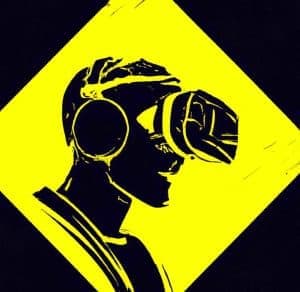Title: Assassin’s Creed Unity
Developer: Ubisoft Montreal, Publisher: Ubisoft
Platform Reviewed: PlayStation 4
Platforms: PlayStation 4, Xbox One, PC
Released: November 11, 2014
Article Reading Time: 9 minutes
Heat Index: 6/7 – A good Assassin at last, we were satisfied.
Heat index shows two values on a scale to 10 where a better number is better. The first is for the pre-game expectation level and the second for the outcome feelings after we finished the game. Its not the total score verdict yet.

The Living Canvas of Paris – Echoes of Revolution Awakens
“Assassin’s Creed Unity” isn’t just a foray into historical fiction; it’s a portal to the heart of revolutionary Paris. The game achieves an extraordinary feat in world-building, where the city of Paris is not merely a backdrop but a living, breathing character. Each district, from the bustling markets to the opulent palaces, tells its own story, echoing the tumult of a society on the brink of transformation. The meticulous recreation of landmarks, the dynamic crowd systems, and the attention to historical detail immerse the player in a grand and gritty world.
Arno Dorian: A Journey of Redemption:
In Arno Dorian, we find a protagonist as complex as the city he navigates. His evolution from a brash young man to a key figure in the Brotherhood of Assassins mirrors the transformation of Paris itself. The depth of his character is revealed through his interactions, his personal losses, and his quest for redemption. His relationship with Élise, a character caught between loyalty and love, adds a poignant layer to the narrative, making the story of “Unity” not just about the revolution but about the people at its heart.

Revolution in Motion: Parkour Reimagined: Freedom in Movement
In “Assassin’s Creed Unity,” the reinvention of parkour mechanics is a testament to the game’s commitment to innovation. The fluidity and realism in movement allow players to navigate Paris with unprecedented agility. Buildings and structures are not just obstacles but playgrounds for tactical movement. This chapter delves into the intricacies of the new Parkour Up and Parkour Down mechanics, exploring how they redefine player mobility and interaction with the game’s environment.
Strategic Combat: A Dance of Blades
The combat system in “Unity” marks a significant shift from its predecessors. It demands a more strategic approach, where timing and precision replace the prior reliance on speed and brute force. This section examines the revamped combat mechanics, the integration of stealth elements, and the strategic choices available to players. The focus is on how these changes elevate the player’s experience, making each confrontation thoughtful rather than a mere button-mashing affair.

Crafting the Visual and Auditory Experience: The Artistic Majesty of Paris is A Visual Masterpiece
“Assassin’s Creed Unity” elevates the visual experience to new heights, showcasing the stunning potential of modern gaming technology. This chapter delves into the intricate art direction of the game, highlighting how advanced lighting, detailed textures, and sophisticated character modeling come together to create a historically authentic and visually breathtaking Paris. The game’s depiction of iconic landmarks like Notre Dame de Paris is a feat of technical prowess and a tribute to the city’s enduring beauty.
Soundscapes of Revolution: Crafting the Auditory Narrative
The auditory experience in “Unity” is as vital as its visual counterpart. This section explores the game’s rich tapestry of sound, from the immersive ambient noises of the bustling city to the emotionally resonant musical score. The voice acting, sound effects, and music work harmoniously to bring the world of revolutionary Paris to life, enhancing the player’s emotional connection to the game and its narrative. The game’s sound design is not just about background noise; it’s an integral part of the storytelling, setting the mood and atmosphere for each moment.
Redefining Realism: The Technical Triumphs and Challenges with the Anvil Engine
The technical backbone of “Assassin’s Creed Unity” lies in its powerful Anvil engine. This section examines how the engine enhances the visual splendor of the game and supports complex simulations like crowd dynamics, crucial for creating an authentic revolutionary Paris. The engine’s capacity to handle detailed environments and large-scale urban landscapes is a landmark in gaming technology, bringing a new level of realism and immersion to the series.

Navigating the Hurdles: Overcoming Technical Challenges
Despite its technical marvels, “Unity” faced significant challenges post-launch, particularly regarding performance and stability. This chapter discusses the initial hurdles players face, from frame rate drops to graphical glitches, and the developers’ efforts to address these issues through updates and patches. The journey from a rocky start to a polished experience showcases the dedication to quality and player satisfaction, reinforcing the game’s status as a technical milestone in the series.
Unity in Brotherhood: Innovating with Co-Op Gameplay
“Assassin’s Creed Unity” introduced a groundbreaking cooperative multiplayer experience, a first for the series. This section delves into how the co-op mode redefines the gameplay dynamics, allowing players to join forces in the heart of revolutionary Paris. The design and execution of cooperative missions are examined, highlighting how they complement the game’s narrative and offer unique challenges and strategies, encouraging teamwork and deepening the game’s social aspect.
Community Engagement and Response
The introduction of co-op gameplay significantly impacted the “Assassin’s Creed” community. This chapter explores players’ reception of the multiplayer mode, discussing how it fostered a sense of camaraderie and offered a new dimension to the game’s experience. The response from the community, including feedback and how it influenced subsequent updates and improvements, is analyzed to understand the game’s evolving legacy within its player base.
The Pillars of Revolution: Societal Impact and Historical Significance
In the heart of “Assassin’s Creed Unity,” the societal impact and historical significance of the French Revolution are vividly portrayed. The game masterfully presents the diverse narratives of the era, from the plight of the commoners demanding equality to the aristocracy’s struggle for power. Unity delves into the ideological clash between the old and new orders, capturing the political, social, and human costs of the revolution.
The darker aspects of this period, including the Reign of Terror, are presented in a balanced manner, offering a comprehensive view of the events that shaped modern Europe. The game not only serves as a backdrop for the story but also as a character in itself, inviting players to ponder over the broader implications of justice, freedom, and equality.
Through its immersive storytelling and gameplay, “Assassin’s Creed Unity” provides not just entertainment but a profound understanding of the French Revolution’s significance, positioning it as both an educational tool and a historical journey. The game allows players to witness and participate in shaping the world we know today, highlighting its critical role in making history come alive.
An Assassin’s Creed: Philosophy and Brotherhood
“Assassin’s Creed Unity” not only immerses players in the rich historical setting of the French Revolution but also delves into the deeper philosophical underpinnings of the Assassin’s Creed. This section of the review explores the game’s exploration of the Creed’s philosophy and how it shapes the Brotherhood and their actions.

The game thoughtfully examines themes of justice, freedom, and the moral complexities faced by the Assassins in their fight against oppression. It portrays the Brotherhood not just as fighters but as ideologues, bound by a deep-set belief system that drives their actions. The Creed’s tenets are tested against the backdrop of the Revolution’s chaos, forcing characters like Arno to confront moral dilemmas and personal conflicts.
This narrative exploration of the Creed goes beyond the surface-level portrayal of a secret organization; it offers a rich examination of the ideological battles that drive the series’ narrative. The game invites players to ponder the true meaning of being an Assassin, beyond the assassinations and stealth missions, making it a compelling exploration of the series’ core philosophy.
Conclusion: Unity’s Place in the Assassin’s Creed Pantheon
As “Assassin’s Creed Unity” draws to a close, its place within the Assassin’s Creed series becomes evident. The game stands as a pivotal chapter, marked by its deep dive into the French Revolution, refined gameplay mechanics, and enhanced narrative depth.
Unity’s portrayal of a living, breathing Paris, combined with the complex journey of Arno Dorian, sets a new benchmark for character development and world-building in the series. The game’s advancements in parkour, combat, and graphical fidelity are not just improvements but transformative changes that have influenced the direction of subsequent titles.
This conclusion not only celebrates Unity’s achievements but also anticipates the future of the series, particularly in how it set the stage for “Assassin’s Creed Syndicate.” It acknowledges Unity’s role in evolving the series and paving the way for new stories, settings, and innovations in the Assassin’s Creed universe.





















